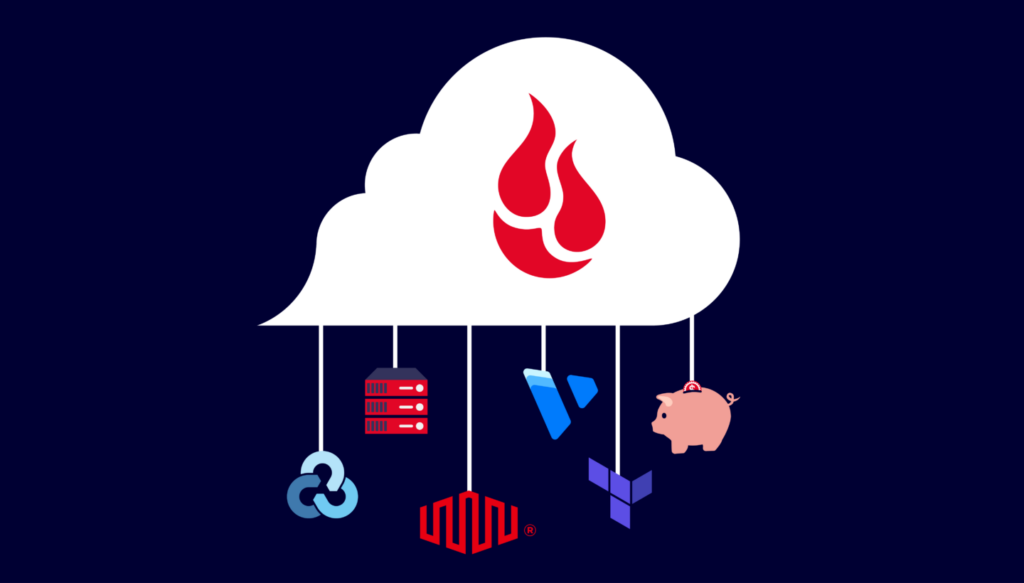
“Nobody ever got fired for buying AWS.” It’s true: AWS’s one-size-fits-all solution worked great for most businesses, and those businesses made the shift away from the traditional model of on-prem and self-hosted servers—what we think of as Cloud 1.0—to an era where AWS was the cloud, the one and only, which is what we call Cloud 2.0. However, as the cloud landscape evolves, it’s time to question the old ways. Maybe nobody ever got fired for buying AWS, but these days, you can certainly get a lot of value (and kudos) for exploring other options.
Developers and IT teams might hesitate when it comes to moving away from AWS, but AWS comes with risks, too. If you don’t have the resources to manage and maintain your infrastructure, costs can get out of control, for one. As we enter Cloud 3.0 where the landscape is defined by the open, multi-cloud internet, there is an emerging trend that is worth considering: the rise of specialized cloud providers.
Today, I’m sharing how software as a service (SaaS) startups and modern businesses can take advantage of these highly-focused, tailored services, each specializing and excelling in specific areas like cloud storage, content delivery, cloud compute, and more. Building on a specialized stack offers more control, return on investment, and flexibility, while being able to achieve the same performance you expect from hyperscaler infrastructure.
From a cost of goods sold perspective, AWS pricing wasn’t a great fit. From an engineering perspective, we didn’t want a net-new platform. So the fact that we got both with Backblaze—a drop-in API replacement with a much better cost structure—it was just a no-brainer.
—Rory Petty, Co-Founder & CTO, Tribute
The Rise of Specialized Cloud Providers
Specialized providers—including content delivery networks (CDNs) like Fastly, bunny.net, and Cloudflare, as well as cloud compute providers like Vultr—offer services that focus on a particular area of the infrastructure stack. Rather than trying to be everything to everyone, like the hyperscalers of Cloud 2.0, they do one thing and do it really well. Customers get best-of-breed services that allow them to build a tech stack tailored to their needs.
Use Cases for Specialized Cloud Providers
There are a number of businesses that might benefit from switching from hyperscalers to specialized cloud providers, including:
- Businesses dealing with large amounts of data that need an easy cost-effective way of storing their data.
- Media streaming applications that require fast and reliable content delivery.
- SaaS companies looking to optimize their cloud budget without sacrificing performance.
- Platforms that require robust and affordable server hosting, like in the gaming industry.
In order for businesses to take advantage of the benefits (since most applications rely on more than just one service), these services must work together seamlessly.
Let’s Take a Closer Look at How Specialized Stacks Can Work For You
If you’re wondering how exactly specialized clouds can “play well with each other,” we ran a whole series of application storage webinars that talk through specific examples and uses cases. I’ll share what’s in it for you below.
1. Low Latency Multi-Region Content Delivery with Fastly and Backblaze
Did you know a 100-millisecond delay in website load time can hurt conversion rates by 7%? In this session, Pat Patterson from Backblaze and Jim Bartos from Fastly discuss the importance of speed and latency in user experience. They highlight how Backblaze’s B2 Cloud Storage and Fastly’s content delivery network work together to deliver content quickly and efficiently across multiple regions. Businesses can ensure that their content is delivered with low latency, reducing delays and optimizing user experience regardless of the user’s location.
2. Scaling Media Delivery Workflows with bunny.net and Backblaze
Delivering content to your end users at scale can be challenging and costly. Users expect exceptional web and mobile experiences with snappy load times and zero buffering. Anything less than an instantaneous response may cause them to bounce.
In this webinar, Pat Patterson demonstrates how to efficiently scale your content delivery workflows from content ingestion, transcoding, storage, to last-mile acceleration via bunny.net CDN. Pat demonstrates how to build a video hosting platform called “Cat Tube” and shows how to upload a video and play it using HTML5 video element with controls. Watch below and download the demo code to try it yourself.
3. Balancing Cloud Cost and Performance with Fastly and Backblaze
With a global economic slowdown, IT and development teams are looking for ways to slash cloud budgets without compromising performance. E-commerce, SaaS platforms, and streaming applications all rely on high-performant infrastructure, but balancing bandwidth and storage costs can be challenging. In this 45-minute session, we explored how to recession-proof your growing business with key cloud optimization strategies, including ways to leverage Fastly’s CDN to balance bandwidth costs while avoiding performance tradeoffs.
4. Reducing Cloud OpEx Without Sacrificing Performance and Speed
Greg Hamer from Backblaze and DJ Johnson from Vultr explore the benefits of building on best-of-breed, specialized cloud stacks tailored to your business model, rather than being locked into traditional hyperscaler infrastructure. They cover real-world use cases, including:
- How Can Stock Photo broke free from AWS and reduced their cloud bill by 55% while achieving 4x faster generation.
- How Monument Labs launched a new cloud-based photo management service to 25,000+ users.
- How Black.ai processes 1000s of files simultaneously, with a significant reduction of infrastructure costs.
5. Leveling Up a Global Gaming Platform while Slashing Cloud Spend by 85%
James Ross of Nodecraft, an online gaming platform that aims to make gaming online easy, shares how he moved his global game server platform from Amazon S3 to Backblaze B2 for greater flexibility and 85% savings on storage and egress. He discusses the challenges of managing large files over the public internet, which can result in expensive bandwidth costs. By storing game titles on Backblaze B2 and delivering them through Cloudflare’s CDN, they achieve reduced latency since games are cached at the edge, and pay zero egress fees thanks to the Bandwidth Alliance. Nodecraft also benefited from Universal Data Migration, which allows customers to move large amounts of data from any cloud services or on-premises storage to Backblaze’s B2 Cloud Storage, managed by Backblaze and free of charge.
Migrating From a Hyperscaler
Though it may seem daunting to transition from a hyperscaler to a specialized cloud provider, it doesn’t have to be. Many specialized providers offer tools and services to make the transition as smooth as possible.
- S3-compatible APIs, SDKs, CLI: Interface with storage as you would with Amazon S3—switching can be as easy as dropping in a new storage target.
- Universal Data Migration: Universal Data Migration helps you quickly and securely move large datasets into B2 Cloud Storage—from public clouds and cloud drives, servers, and tape. Plus, we’ll help cover migration costs with qualifying commitments.
- Free egress: Move data freely with the Bandwidth Alliance and other partnerships between specialized cloud storage providers.
As the decision maker at your growing SaaS company, it’s worth considering whether a specialized cloud stack could be a better fit for your business. By doing so you could potentially unlock cost savings, improve performance, and gain flexibility to adapt your services to your unique needs. The one-size-fits-all is no longer the only option out there.





